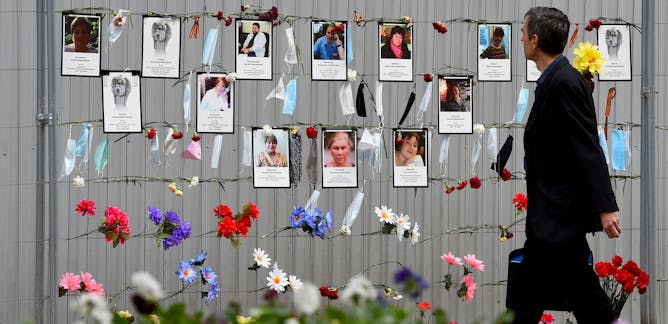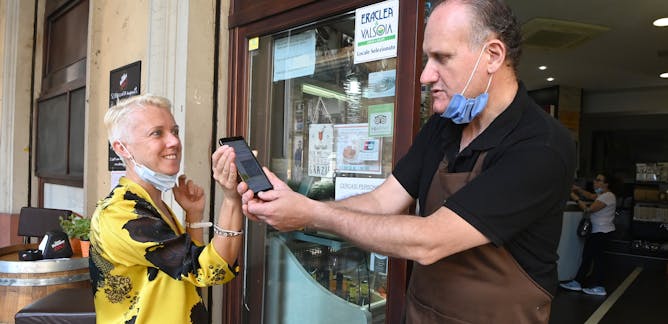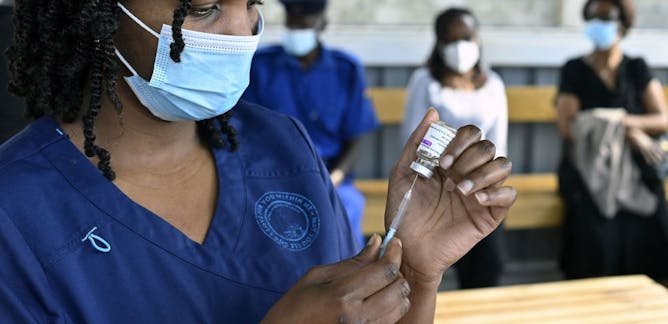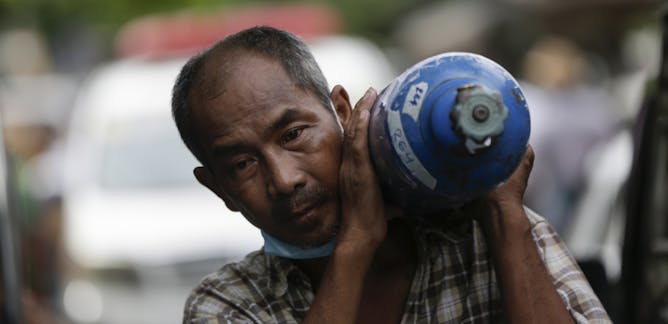|
The genesis of this special newsletter on COVID-19 was rather naive in retrospect. In early summer, my colleagues began strategizing on how to cover the next phase of the pandemic, and one question was: Could we in the U.S. work with editions of The Conversation in other countries to expand our coverage of COVID-19? At the time, my thinking was that the time was ripe to look outside the U.S. because many Americans were breathing a collective sigh of relief as rapid vaccination of tens of millions of people allowed many to act more or less like it was pre-pandemic times.
It is, in fact, an excellent time to look at the bigger picture of the pandemic around the world, but not at all for the reasons I first thought. As we all know, cases are shooting up around the world and that springtime optimism in the U.S. is fast slipping away. But how this latest wave is playing out varies dramatically country to country, and each nation faces its own particular challenges – something our collection of articles shows.
Working with colleagues in other countries, we published a series of articles analyzing the state of the pandemic in individual countries. There’s a lot to learn in looking at a nation’s response overall. In India, for instance, the number of people who are not vaccinated or have not already been infected is more than the total population of the U.S., an indication of the scale of the challenge of mass
vaccination. Meanwhile, in Russia, deep-rooted skepticism of institutions has contributed to a vaccination rate around 24%, less than half the U.S. And despite the U.K.’s great success with vaccination and falling infections, it’s likely to face a new wave of cases in the fall.
This curated list of stories is just a snapshot of the global coverage on the pandemic, written by medical and public health experts, we’ve already published and will continue to bring you in the months ahead.
If you’d like to get more science news from The Conversation, sign up for our weekly science newsletter, which is sent out every Wednesday afternoon.
Subscribe
|
COVID-19
|

Rajib Dasgupta, Jawaharlal Nehru University
A public health scholar based in New Delhi explains how India has emerged from the massive spike in COVID-19 cases, even as the country braces for a new wave.
| |

Arik Burakovsky, Tufts University
Another wave of COVID-19 in Russia is undermining public health and threatens economic recovery. But widespread mistrust of institutions will stymie the country’s efforts to move past the pandemic.
|

Adam Kleczkowski, University of Strathclyde
Vaccine coverage is among the world’s best and cases have come down from their peak – but the pandemic isn’t over yet.
| |

Sara Belligoni, University of Central Florida
After enduring a devastating wave of infections, deaths and lockdowns at the start of the pandemic, Italy is putting in place tougher anti-COVID measures, including a vaccine passport.
|

Adolfo Martinez Valle, Universidad Nacional Autónoma de México (UNAM); Felicia Marie Knaul, University of Miami
COVID-19 cases in Mexico are approaching the highest levels seen during the second wave in late January 2021, with about 22,000 new infections a day. A slow vaccine rollout is stunting progress.
| |

Michael Toole, Burnet Institute
Since late July, China has faced its biggest challenge since the first wave in Wuhan.
|
|
|
|
|

Doyin Odubanjo, Nigerian Academy of Science
Nigeria must increase its testing capacity and do more genomic studies to deal effectively with the Delta variant of COVID-19.
| |

Abdu Mohiddin, Aga Khan University ; Marleen Temmerman, Aga Khan University ; Rodney Adam, Aga Khan University Hospital
The new Delta variant presents a considerable threat due to its significantly increased transmissibility rather than severity.
|

Adam Simpson, University of South Australia; Nicholas Farrelly, University of Tasmania
COVID is running rampant in Myanmar, where the military junta has been accused of arresting doctors and weaponising the pandemic. The result could be catastrophic for the entire region.
| |

Dicky Budiman, Griffith University
COVID-19 cases in Indonesia are rising and are expected to keep doing so for another two weeks until the effects of restrictions and mask mandates are seen.
|
|
|